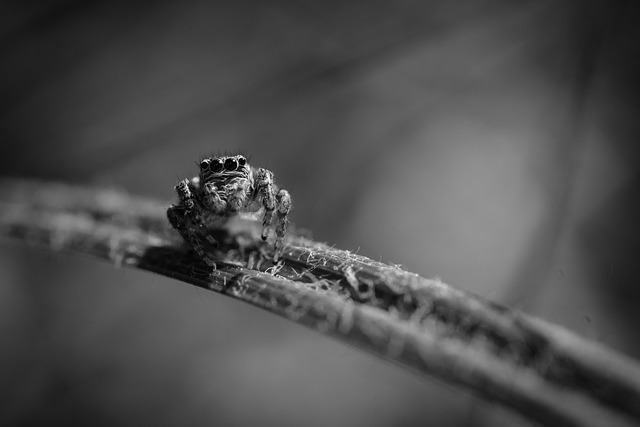Commercial spider web removal is a critical facility maintenance task prioritizing health and safety. Professionals employ specialized equipment and expertise to tackle unique challenges, offering tailored strategies that go beyond immediate web elimination. By identifying patterns, understanding species behavior, and evaluating environmental factors, they develop long-term solutions. Customized plans target root causes, inhibit future infestations, enhance aesthetics, and ensure safety in commercial spaces. A strategic approach includes assessing problem scope, using targeted treatments, conducting regular inspections, implementing preventive measures, and educating stakeholders to minimize the need for frequent services.
Tired of recurring spider web problems plaguing your commercial space? This comprehensive guide offers tailored solutions. We explore the scope and importance of efficient commercial spider web removal, pinpoint common patterns and their recurrence, and share expert tips for crafting effective, long-lasting customized plans. From implementation strategies to preventive measures, discover proven methods to keep your environment clear and safe from unwanted arachnid inhabitants.
Understanding Commercial Spider Web Removal: The Scope and Importance
In the context of commercial properties, effective spider web removal goes beyond mere aesthetics; it’s a critical component of facility maintenance and health and safety. Commercial spider web removal involves a strategic approach to address not just visible webs but also the hidden network that can harbour harmful arachnid species and their egg sacs. The scope includes thorough inspection, safe and environmentally friendly methods of removal, and preventative measures to deter future infestation.
Understanding the unique challenges posed by commercial spaces—from large warehouses to intricate office interiors—is key to successful spider web removal. Professional services tailor their approaches based on these variables, employing specialized equipment and expertise to ensure webs are eliminated effectively while minimizing disruption to business operations. This proactive approach not only maintains a clean, professional image but also fosters a safer environment for occupants and prevents potential legal liabilities related to health and safety hazards.
Identifying Common Spider Web Patterns and Their Recurrence
Identifying common spider web patterns is a crucial step in addressing recurring issues effectively. Commercial spider web removal often involves understanding the habits and preferences of spiders when they construct their intricate webs. Certain species are known for specific web designs, such as the sticky silk threads that trap insects. By observing these patterns, professionals can determine entry points and potential nest locations.
Regular recurrence is a clear indicator that spiders find the environment favorable for building webs. Factors like available food sources, suitable hiding spots, and optimal temperature contribute to their decision-making process. Commercial spider web removal services should consider these recurring patterns to develop customized plans, ensuring long-term solutions rather than temporary fixes.
Crafting Effective Customized Plans for Long-Lasting Solutions
When it comes to addressing recurring spider web problems, a one-size-fits-all approach rarely yields lasting results. That’s why crafting effective customized plans is paramount for long-lasting solutions in commercial spider web removal. By thoroughly evaluating each unique situation, professionals can identify the specific triggers and habitats that encourage webbing—whether it’s excessive vegetation, structural crevices, or other environmental factors. This detailed assessment allows for tailored strategies that go beyond mere removal, targeting the root causes to prevent future infestations.
Customized plans also offer flexibility and adaptability. Spider populations and web patterns can evolve over time, so a rigid approach may quickly become ineffective. By designing interventions that account for these dynamics, commercial spider web removal specialists ensure their solutions remain pertinent and successful. This proactive mindset not only saves businesses from frequent, costly cleanups but also enhances the overall aesthetics and safety of their spaces.
Implementation Strategies: Ensuring Success and Preventive Measures
Implementing customized plans for commercial spider web removal requires a strategic approach to ensure success and prevent future occurrences. The first step is to assess the scope of the problem, identifying the types of spiders involved and their nesting habits. This knowledge allows for targeted treatment methods, such as using appropriate insecticides or implementing physical barriers, like mesh screens, to disrupt their web-building cycles. Regular maintenance checks are crucial; scheduling periodic inspections helps catch new webs early, making removal more efficient.
Additionally, fostering an environment that discourages spider infestations is vital. This includes maintaining good hygiene and sanitation practices, ensuring proper waste management, and sealing entry points like cracks and gaps in walls or windows. Educating building managers and occupants about these preventive measures can significantly reduce the need for frequent commercial spider web removal services.
Commercial spider web removal requires a tailored approach to tackle recurring issues effectively. By understanding common web patterns and implementing customized plans, businesses can achieve long-lasting solutions. This strategic process involves identifying problem areas, designing targeted interventions, and employing successful implementation strategies. With the right measures in place, commercial spaces can stay free from spider webs, creating a safer and more pleasant environment for folks. Remember that, in the world of commercial spider web removal, a well-crafted plan is the key to success.
